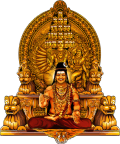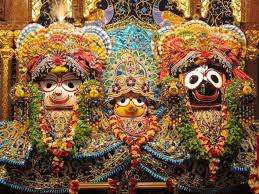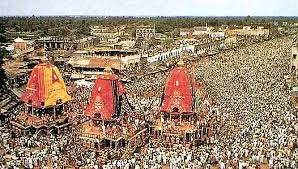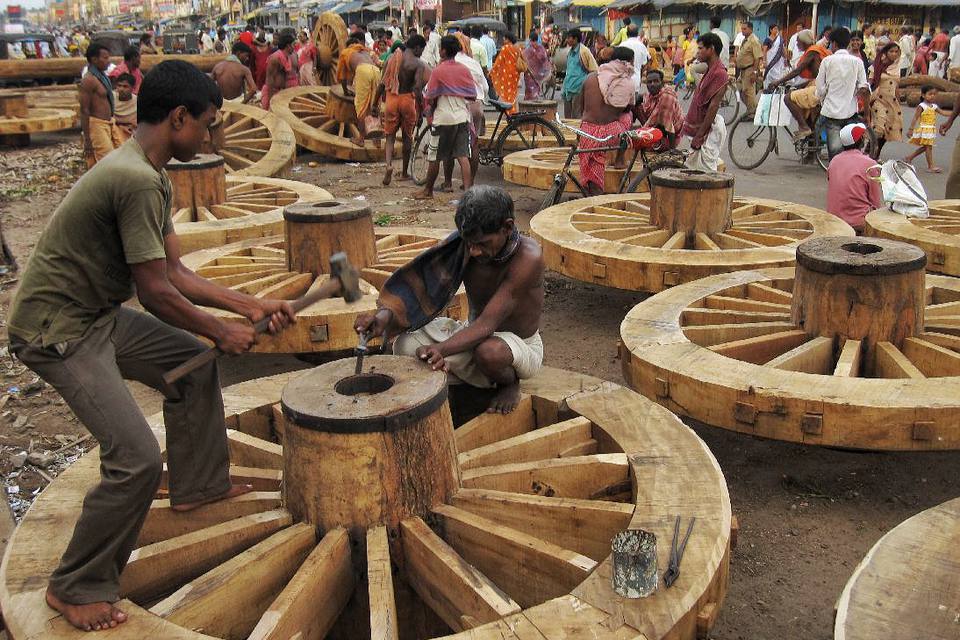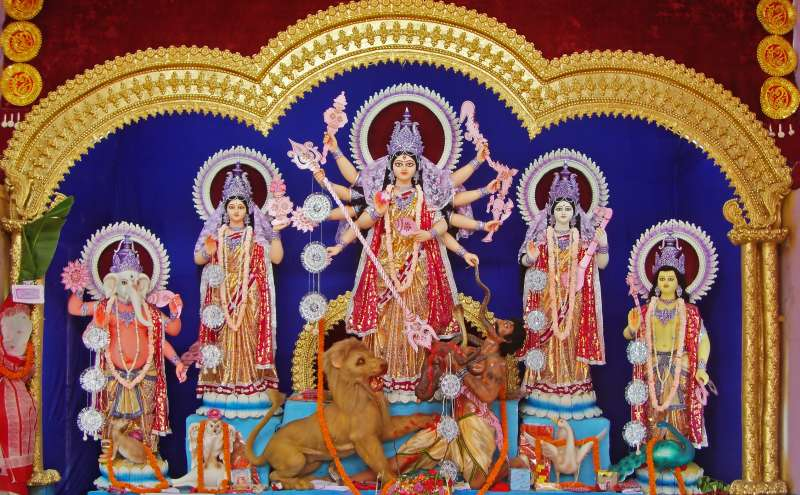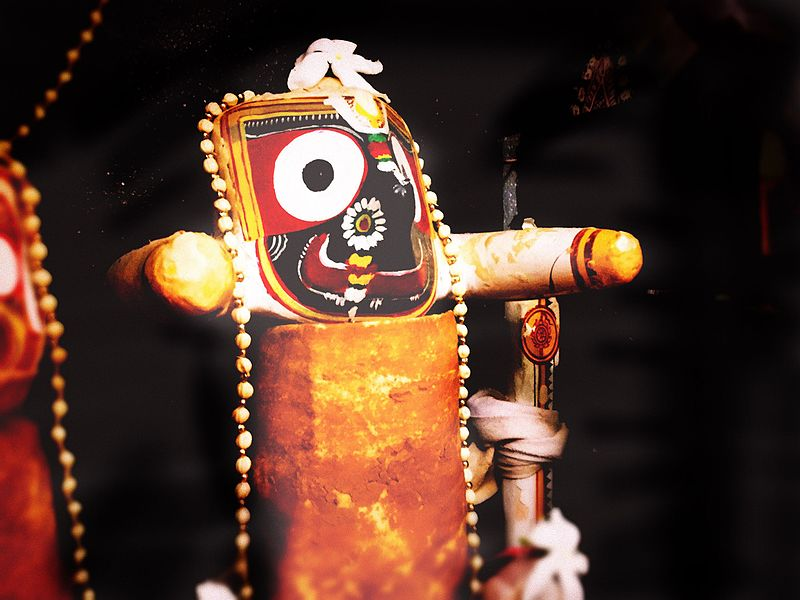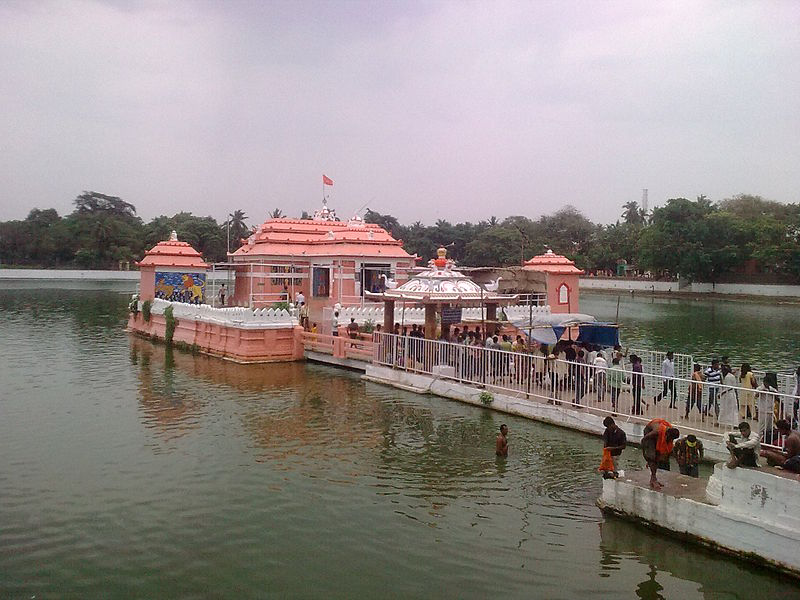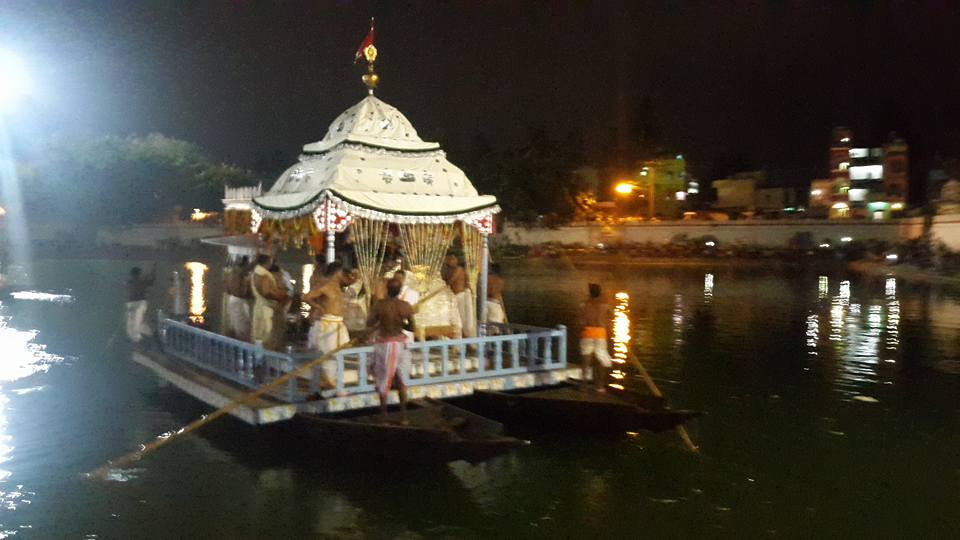Festivals of Surangi Samrajyam
The Puri Rath Yatra
The Puri Jagannath temple is famous for its annual Ratha Yatra, or chariot festival, in which the three principal deities (Jagannath, Balabhadra and Subhadra) are pulled on huge and elaborately decorated temple cars. It is the oldest Ratha Yatra taking place in India and the world, whose descriptions can be found in the sacred Hindu scriptures – Brahma Purana, Padma Purana, Skanda Purana and Kapila Samhita. This annual festival is celebrated on Ashadha Shukla Paksha Dwitiya (the second day in the waxing moon period of the Vedic month Ashadha corresponding to months of June – July).
The festival commemorates the annual journey of Lord Jagannath, Lord Balabhadra, and their sister Subhadra to their aunt’s temple, the Gundicha Temple which is situated at a distance of 2 km from their temple. The three chariots remain there for nine days. They are also accompanied by the Sudarshana chakra. Then the deities return to the Main temple. The return journey of the Puri Jagannath Ratha Jatra is known as Bahuda Jatra.
The history behind this festival is as follows: Every year, in this month, when the summer is at its height, the deity and his siblings step out to bathe in public, unable to bear the heat inside the temple. This is called Snana Purnima (Snan – bath; Purnima – full moon night). Then, for the fortnight that follows, Lord Jagannath (who is none other than Lord Krishna) and his siblings take ill after they bathe with 108 pots of water under the blazing sun, and are kept in a recovery chamber called anasar ghar. When they recover, their appetite returns and they wish to eat the food cooked by their aunt Gundicha, whose house is a little away from his temple!
The chariots resemble temple structures and are pulled through the streets of Puri called Badadanda. The three chariots of Balabhadra, Subhadra and Jagannatha are newly constructed every year with wood of specified trees like phassi, dhausa, etc. They are customarily brought from the ex-princely state of Dasapalla by a specialist team of carpenters who have hereditary rights and privileges for the same. The logs are traditionally set afloat as rafts in the river Mahanadi. These are collected near Puri and then transported by road.
The three chariots are decorated as per the unique tradition and followed for centuries stand on the Bada Danda, the Grand Avenue. Covered with bright canopies made of stripes of red cloth and combined with those of black, yellow and green colors, the huge chariots are lined across the wide avenue in front of the majestic temple close to its eastern entrance, which is also known as the Sinhadwara or the Lion’s Gate.
Lord Jagannatha’s chariot is called Nandighosa. It is forty-five feet high and forty-five feet square at the wheel level. It has sixteen wheels, each of seven-foot diameter, and is decorated with a cover made of red and yellow cloth. Lord Jagannatha is identified with Lord Krishna, who is also known as Pitambara, meaning the one attired in golden yellow robes and hence the distinguishing yellow stripes on the canopy of this chariot.
The chariot of Lord Balarama, called the Taladhwaja, is the one with the Palm Tree on its flag. It has fourteen wheels, each of seven-foot diameter and is covered with red and green cloth. Its height is forty-four feet.
The chariot of Subhadra, known as Dwarpadalana, literally “trampler of pride,” is forty-three feet high with twelve wheels, each of seven-foot diameter. This chariot is decorated with a covering of a red and black cloth – black being traditionally associated with Shakti or the Universal Cosmic Mother or Universal Divine Feminine Energy.
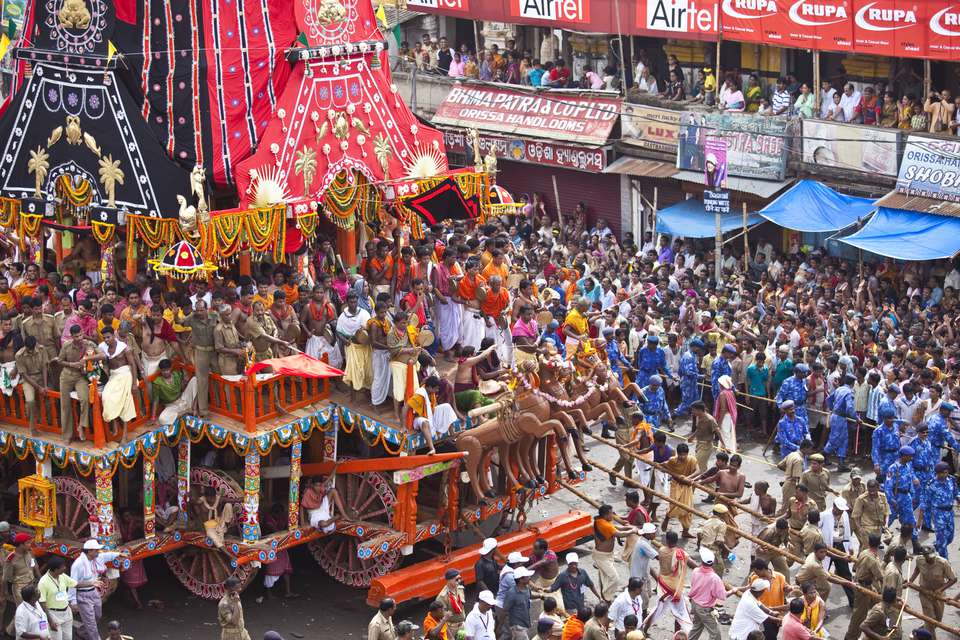
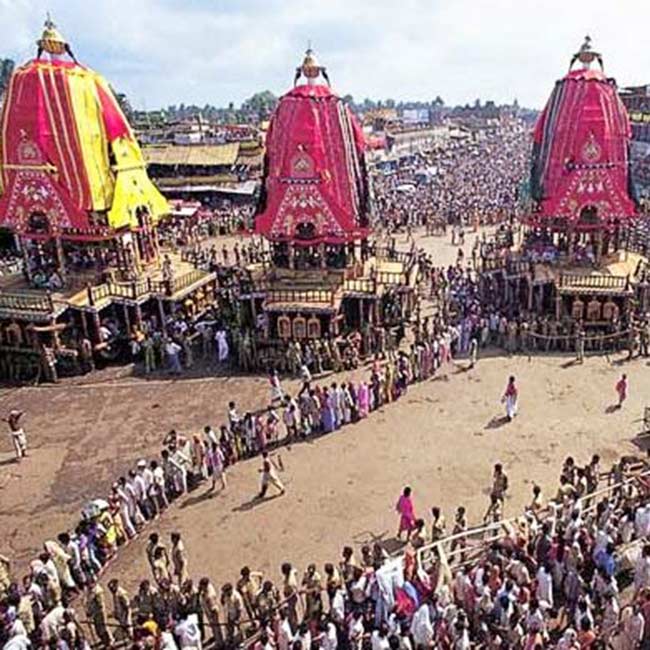
Around each of the chariots are nine Parsva devatas (deities with weapons who surround the main deity), painted wooden images representing different deities on the chariots’ sides. Each of the chariots is attached to four horses. These are of different colors – white horses for Jagannatha, dark horses for Balarama, and red horses for Mother Subhadra. Each chariot has a charioteer called Sarathi. The three charioteers attached to the chariots of Jagannatha, Balarama and Subhadra respectively are Daruka, Matali and Arjuna.
Unlike the stone and metal icons found in most Hindu temples, the image of Jagannath is made of wood and is ceremoniously replaced every twelve or nineteen years by an exact replica, in a ritual called Nabakalevara.
During the festival, devotees from all over the world go to Puri with an earnest desire to help to pull the Lords’ chariots with the help of other priests pulling the chariots with ropes. They consider this an auspicious deed. The huge processions accompanying the chariots play devotional songs with drums, tambourines, trumpets, etc. Children line the streets through which the chariot will pass and add to the mass chorus. The Rathas are pulled by the millions of pilgrims who congregate from all countries, for the event. The event is broadcast live on many Indian, foreign television channels as well as many websites.
Thakurani Yatra
Thakurani Yatra is a very popular cultural occasion celebrated all over Odisha. Especially in the Ganjam district, people celebrate this occasion traditionally for good health and prosperity. This celebration includes classical folk dance, role-play of different traditional characters from Hindu History like the traditional Tiger dance, enactments of Hindu epics such as the Ramayana, Mahabharata and other incidences from the Puranas (Hindu History).

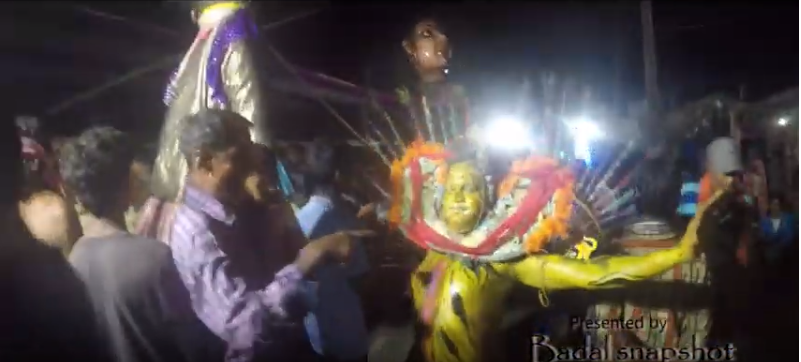
Local people of Ganjam dress up and celebrate the Thakurani Festival with pomp and gaiety.
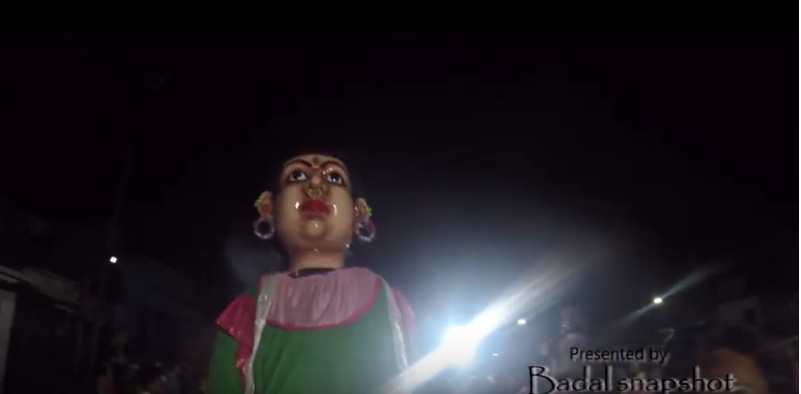
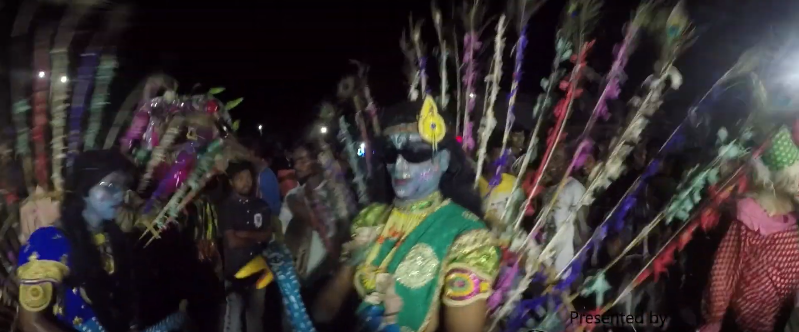
Local people of Ganjam dress up and celebrate the Thakurani Festival with pomp and gaiety.
Durga Puja
Durga Puja in Odisha is observed as Vasanti Durga Puja or Chaitra Durga Puja in the Oriya month of Chaitra (March or April), Sharadiya Durga Puja in the Oriya month of Aswina (September–October) and Kali puja (October–November), which are celebrated with the utmost solemnity, gaiety and éclat.
The autumnal or Sharadiya ceremony is known under various names in Odisha: Dussehra, Durgapuja, Akal Bodhan, Shodasa Upachara, Durgotsava, Sharadiya Utsava, etc.
Durga Puja is a festival, which is observed for 10 days. The pandals (temporary structures) are decorated beautifully. This festival marks the victory of the Cosmic Mother over the negativity and the bestowing of enlightenment to one and all.
Sword fighting and other martial arts
Traditional villages in the state of Odisha have their own way of celebrating the Dussera festival. Traditional sword fighting tournaments are organised. One of the oldest traditions in the village of Kusupur, in Odisha, has been kept alive for more than one hundred years by Kusupur Dussera Sabha (Dussehra Association in Kusupur), which is in itself unique.
Worship of Sword and other traditional weapons
The holy Hindu scriptures testify that on the tenth day of this festival, Sri Rama (divine incarnation of Lord Vishnu) killed Ravana (a demon who was the King of Sri Lanka) and his victory was celebrated. Therefore, it is also called ‘Vijaya Dasami’ (Victorious tenth day). In the villages, the agriculturists worship their implements. They bring out their rusty swords, spears and other weaponry, clean them immaculately and worship them. “Paika Akhadas” are held in which young men indulge in stylised military dances, displays of sword-fighting and various acrobatic stunts. People clean their professional tools and instruments at this time, and also clean, plaster and whitewash their houses during this festival.
Bhai jiuntia
In the Western region of Odisha and Chhattisgarh, the Bhaijiutia feast is celebrated on the Mahastami day (eighth day) of the Durga Puja by the Oriya women. It is a total fast by women for the entire day and night to seek Goddess Durga’s blessing for the long life of their bhais (brothers).
Gauri Puja
Gauri Puja, also known as Hara-Gauri Puja and Hara-Parvati Puja, is observed by young, unmarried girls, who fast and pray to get a suitable husband. In some part of the state, the deities of Paramashiva and Parvati are also installed, along with the deity of Mahishasura mardini Durga.
Chhatar Jatra
This festival is observed during Dussehra, in the town of BhawaniPatna, in the District of Kalahandi in Orissa. This festival is dedicated to Maa Manikeswari (a form of Prashakti, the Cosmic Feminine Consciousness), the presiding deity of the region. Lakhs of devotees from Odisha and the adjoining state Chhattisgarh come to pay their homage during Chhatar Jatra. After performing the traditional worship in the Manikeswari temple on Mahastami night (the eighth night of Dussehra), the ceremonial Chhatra (umbrella) of the Goddess Manikeswari is taken to a lace called Jenakhal, about three kilometres from the town, where traditional rituals are performed in the early hours of Mahanavami (the ninth day of Dussehra). During the return journey, with the thrilling beat of traditional instruments, the Deity is accompanied by dancers performing Ghumura, a traditional martial dance form. Devotees follow the deity and make various offerings as a token of the fulfillment of their wishes. The devotees also release hundreds of doves in the name of the deity during the celebrations. At the main gate of the temple, the Maharaja (King) of Kalahandi performs a puja and receives the Chhatra from the priests, and takes it inside the temple.
Biraja/Viraja Dussehra Rath Yatra
The Jajpur town has grown around its temples in Orissa. The main temple is that of Birajadevi or the Biraja Temple. Mounted on a lion, she carries a spear with one arm and holds the tail of Mahishasur (demon) with the other. Festivals are held during Durga Puja and Kali Puja. It is one of 51 holy places called Shakti Peeths (where various parts of Sati’s body fell to the Earth) and it is here where Sati’s navel fell. It was named after King Jajati Keshari. It was once the capital of Odisha. During Dussehra, the deity of Devi in the temple is taken on a grand procession around the town on a beautifully decorated chariot.
Dussehra Bullock race
Hundreds of people throng the Chandrapada village in coastal Odisha, to watch a traditional bullock race during Dussehra/Durgapuja. The ‘Dussehra Bullock race’ is a century-old tradition, in which at least 50 bullocks from the village race against each other, decked in embroidered cloths and smeared with vermilion and various paints. Bullock owners pamper their cattle the year-round and feed them with sesame oil, green fodder and other high-calorie food so that the animals can win this annual competition. First, the villagers perform various rituals and serve food to the Brahmins (those belonging to the priestly caste in the village). Once the rituals are over, the villagers bathe the bullocks and smear colors on them. After this, they decorate them with embroidered cloths that are embedded with beads. Once the bullock is ready, people toss a live fish in front of it. After this, they let the bullock loose and they start running. A big feast is organised for the village as the bullock race ends.
Chandana Yatra
Chandana Yatra is also known as Gandhalepana yatra is the longest festival observed at Jagannatha temple at Puri, India. Chandana Yatra meaning Sandalwood Voyage in Sanskrit, which continues for 42 days is observed in two parts: Bahara Chandana and Bhitara Chandana.
Bahara Chandana
Bahara Chandana starts from Akshaya Tritiya (which falls on the third day of the waxing moon in the Vedic month of Vaishakha – Apr-May), an auspicious day for starting new ventures and continues for 21 days. Construction of the chariots for the annual Ratha Yatra festival starts from Akshaya Tritiya.
On the first 21 days, the representative idols of the main deities of the Jagannath temple as well as five Shivalingas known as the Pancha Pandava are taken in a procession from the Singhadwara or the Lion Gate of the Jagannatha temple at Puri to the Narendra Tirtha tank (a pond situated Northeast of the Puri Temple).The deities Madanamohana, Bhudevi, Sridevi and Ramakrishna participate in this yatra for 21 days. The deities are taken on two chapas (boats), namely, Nanda and Bhadra, around the Narendra Tirtha. After offering of various rituals to the deities, they are taken to the Narendra pond located near the Jagannath Puri Temple and they are placed on grandly decorated boats for a procession within the tank.
The Narendra tirtha tank
The deities of Jagannath Puri being taken around the Pond during the festival
Bhitara Chandana
The last 21 days include rituals held inside the temple itself. Instead of the daily processions in the pond, the rituals happen inside the temple on four occasions, the Amavasya (no moon night), on Poornima (full moon night), on Shashti (sixth day of Dussehra) and on Ekadashi (eleventh day) of the bright fortnight.
Pana Sankranti
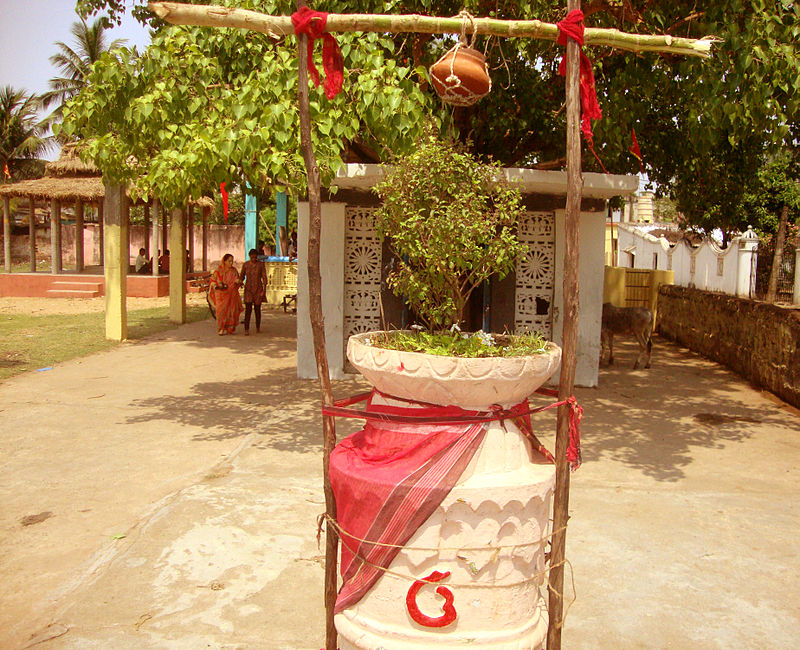
Basundhara theki (a small pot) filled with sweet porridge used on Pana Sankranti
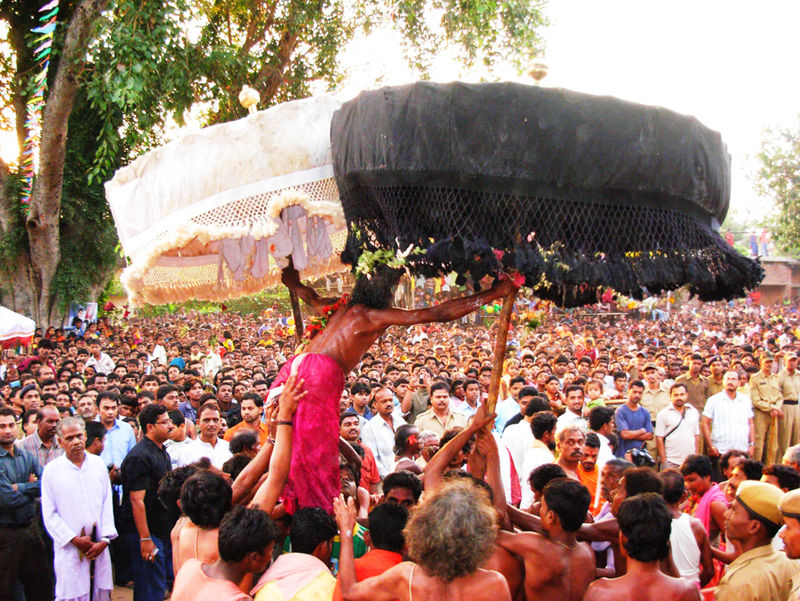
A group street performance on Pana Sankranti
Pana Sankranti, also known as Maha Vishub Sankranti, is the traditional new year day festival of Buddhists and Hindus in Odisha, India. The festival date is set with the solar cycle of the lunisolar calendar, as the first day of the traditional solar month of Mesha (April-May).
The festival is celebrated with visits to Shiva, Shakti, or Hanuman temples, as the day is considered to be the birthday of Hanuman,. People take baths in rivers or major pilgrimage centers. Communities participate in melas (fairs), and watch celebratory traditional performances of local dances. A notable highlight of the social celebrations is the fire-walk, where the devotees walk over a bed of burning coal while being cheered with music and songs. Feasts and special drinks such as a chilled sweet mango-milk-yogurt-coconut drink called Pana is shared, a tradition that partly is the source of this festival’s name.
In the Odia (Orissa) tradition, the Pana Sankranti is believed to be the advent of the Hindu deity Hanuman, whose loving devotion to Lord Rama (divine incarnation of Lord Vishnu) is celebrated. His temples, along with those of Shiva and Surya (Sun God) are revered on the new year.
Hindus also visit Devi (Goddess) temples on Pana Sankranti. The temples include Taratarini Temple in Ganjam, Cuttack Chandi, Biraja Temple, Samaleswari temple and the Sarala Temple.
(Ref: https://en.wikipedia.org/wiki/Pana_Sankranti)
